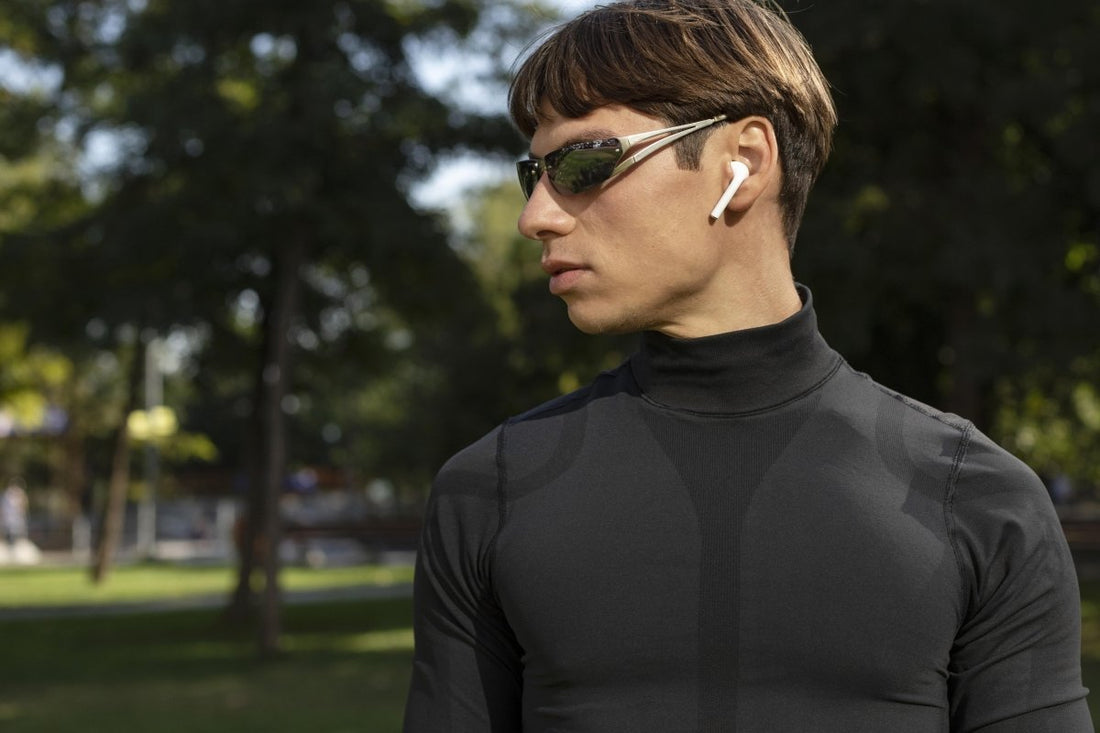
The Ultimate Fit Guide: How to Choose the Right Sports Sunglasses for Your Face
Share
When it comes to sports sunglasses, a great fit isn’t just about style—it’s about comfort, performance, and protection. Ill-fitting sunglasses can slide, pinch, or fail to shield your eyes properly, which is the last thing you need during your outdoor adventures. Use this guide to find the perfect fit for your face and activity.
1. Why Fit Matters
Before diving into the specifics, let’s highlight why a good fit is crucial:
- Comfort: Properly fitting sunglasses stay in place and feel comfortable for extended periods.
- Performance: Secure frames allow you to focus on your activity without constant adjustments.
- Protection: A snug fit ensures your eyes are shielded from UV rays, wind, dust, and debris.
2. Know Your Face Shape
Your face shape plays a big role in determining which sunglasses will suit you best. Here’s a quick breakdown:
- Round Faces: Look for angular or square frames to add definition. Wraparound designs are great for sports and provide full coverage.
- Oval Faces: Lucky you! Most frame styles work well, but oversized or wraparound styles look particularly flattering.
- Square Faces: Opt for rounded or oval frames to soften angular features. Lightweight half-frames are a good choice for runners or cyclists.
- Heart-Shaped Faces: Bottom-heavy frames (wider at the bottom) or aviator-style sunglasses balance a broader forehead.
- Rectangular Faces: Choose larger frames or wraparounds to provide balance and a wider field of vision.
3. Key Features for a Perfect Fit
Regardless of face shape, these features ensure your sunglasses fit like a glove:
- Adjustable Nose Pads: These allow you to customize the fit, ensuring the sunglasses don’t slide down your nose.
- Rubberized Grips: Non-slip temple tips and nose pads keep sunglasses in place, even when sweating.
- Wraparound Design: Provides a secure fit and peripheral coverage, essential for cycling and trail running.
- Temple Length: Check that the arms don’t pinch behind your ears or stick out too far.
- Lens Size: Lenses should cover your eyes fully without obstructing your vision.
4. Sport-Specific Fit Tips
Your activity can influence the type of fit you need:
- Cycling: Look for aerodynamic frames that sit close to your face to reduce drag. Wide lenses with a wraparound fit improve peripheral vision.
- Running: Lightweight and secure frames that don’t bounce during movement are a must. Frameless designs are ideal for a minimal feel.
- Hiking: Sunglasses with adjustable grips and full coverage ensure they stay secure on uneven terrain while protecting against sunlight and debris.
- Water Sports: Ensure a snug fit to avoid losing them in the water. Floating frames are a bonus.
- Winter Sports: Frames that fit under helmets and stay secure during movement are critical. Choose lenses with anti-fog coatings.
5. How to Test the Fit
Before making a purchase, test the sunglasses to ensure they meet your needs:
- Shake Test: Put them on and shake your head. Well-fitted sunglasses shouldn’t budge.
- Comfort Check: Wear them for 10–15 minutes to check for pressure points or discomfort.
- Vision Test: Ensure the lenses don’t obstruct your peripheral vision and sit high enough to avoid peering over the top.
6. Virtual Try-On Tools
Can’t try them on in person? Many brands now offer virtual try-on tools that let you see how frames will look on your face. Use these tools to narrow down your options before purchasing.
7. Final Thoughts
Finding the perfect pair of sports sunglasses isn’t just about aesthetics—it’s about enhancing your performance and keeping your eyes protected. By understanding your face shape, prioritizing comfort, and selecting sport-specific features, you can invest in sunglasses that truly feel like they were made for you.
At Trailvue, we offer a range of sunglasses designed to provide the perfect fit for every face and every adventure. Explore our collection today and see the difference for yourself!
